Paul Almasan
Barcelona Neural Networking Center, Universitat Politècnica de Catalunya, Spain
Accelerating Deep Reinforcement Learning for Digital Twin Network Optimization with Evolutionary Strategies
Feb 01, 2022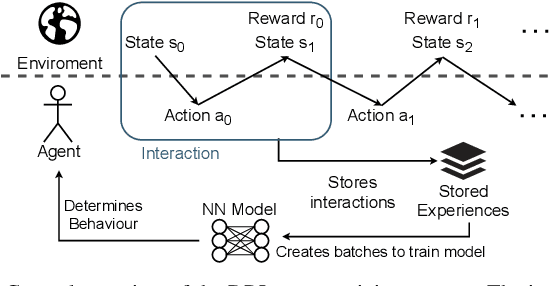
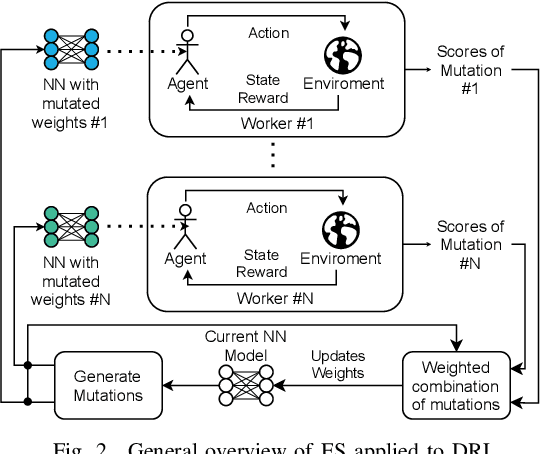
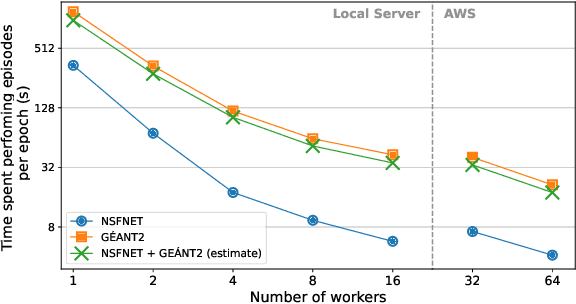
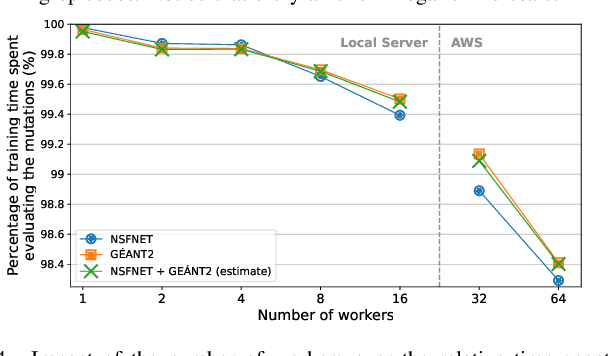
Abstract:The recent growth of emergent network applications (e.g., satellite networks, vehicular networks) is increasing the complexity of managing modern communication networks. As a result, the community proposed the Digital Twin Networks (DTN) as a key enabler of efficient network management. Network operators can leverage the DTN to perform different optimization tasks (e.g., Traffic Engineering, Network Planning). Deep Reinforcement Learning (DRL) showed a high performance when applied to solve network optimization problems. In the context of DTN, DRL can be leveraged to solve optimization problems without directly impacting the real-world network behavior. However, DRL scales poorly with the problem size and complexity. In this paper, we explore the use of Evolutionary Strategies (ES) to train DRL agents for solving a routing optimization problem. The experimental results show that ES achieved a training time speed-up of 128 and 6 for the NSFNET and GEANT2 topologies respectively.
Graph Neural Networks for Communication Networks: Context, Use Cases and Opportunities
Dec 29, 2021
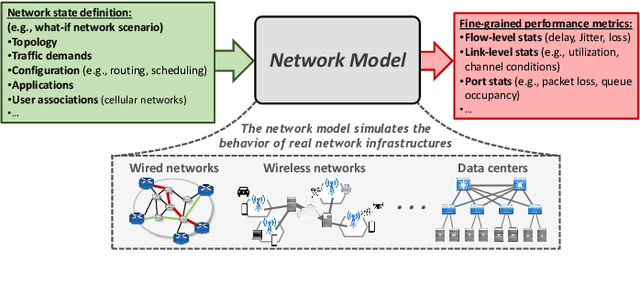
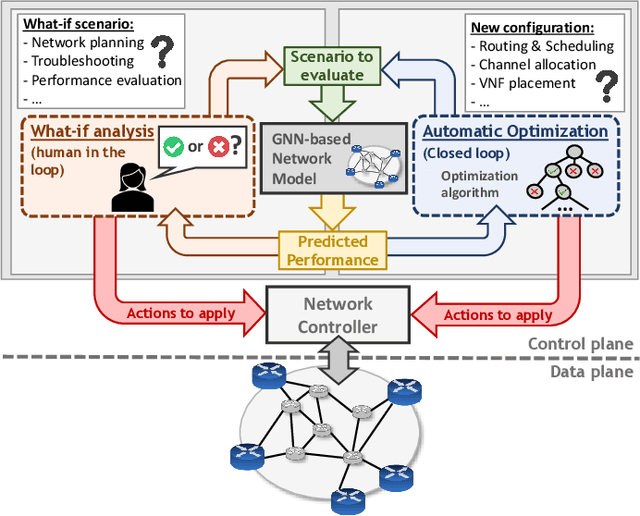
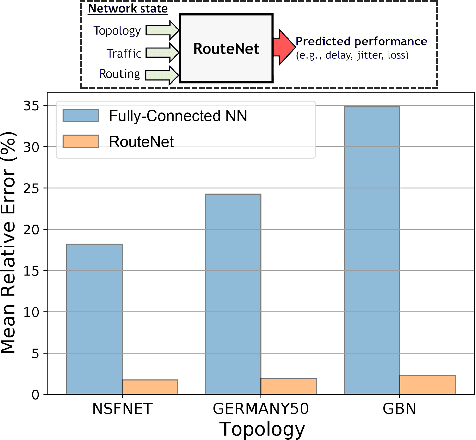
Abstract:Graph neural networks (GNN) have shown outstanding applications in many fields where data is fundamentally represented as graphs (e.g., chemistry, biology, recommendation systems). In this vein, communication networks comprise many fundamental components that are naturally represented in a graph-structured manner (e.g., topology, configurations, traffic flows). This position article presents GNNs as a fundamental tool for modeling, control and management of communication networks. GNNs represent a new generation of data-driven models that can accurately learn and reproduce the complex behaviors behind real networks. As a result, such models can be applied to a wide variety of networking use cases, such as planning, online optimization, or troubleshooting. The main advantage of GNNs over traditional neural networks lies in its unprecedented generalization capabilities when applied to other networks and configurations unseen during training, which is a critical feature for achieving practical data-driven solutions for networking. This article comprises a brief tutorial on GNNs and their possible applications to communication networks. To showcase the potential of this technology, we present two use cases with state-of-the-art GNN models respectively applied to wired and wireless networks. Lastly, we delve into the key open challenges and opportunities yet to be explored in this novel research area.
ENERO: Efficient Real-Time Routing Optimization
Sep 22, 2021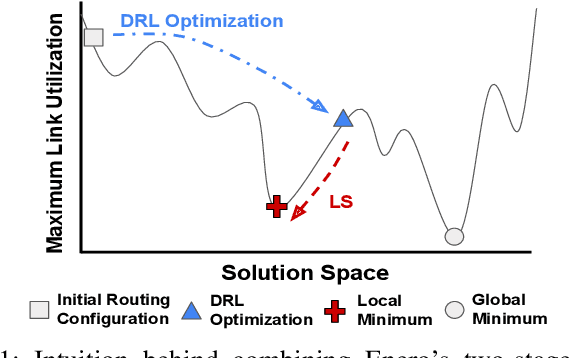
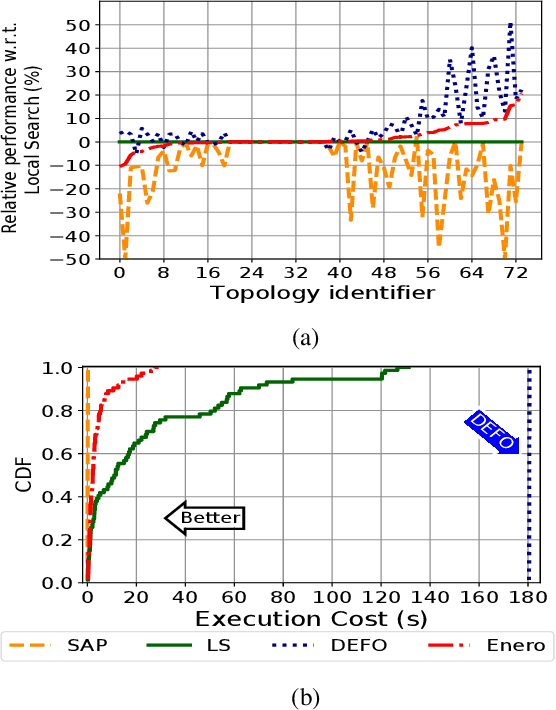
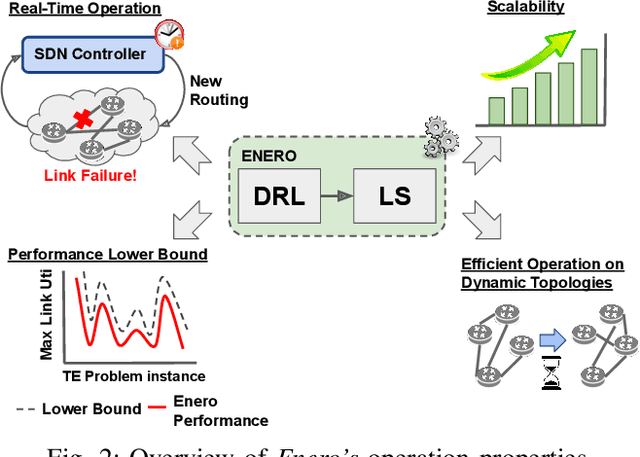

Abstract:Wide Area Networks (WAN) are a key infrastructure in today's society. During the last years, WANs have seen a considerable increase in network's traffic as well as in the number of network applications. To enable the deployment of emergent network applications (e.g., Vehicular networks, Internet of Things), existing Traffic Engineering (TE) solutions must be able to achieve high performance real-time network operation. In addition, TE solutions must be able to adapt to dynamic scenarios (e.g., changes in the traffic matrix or topology link failures). However, current TE technologies rely on hand-crafted heuristics or computationally expensive solvers, which are not suitable for highly dynamic TE scenarios. In this paper we propose Enero, an efficient real-time TE engine. Enero is based on a two-stage optimization process. In the first one, it leverages Deep Reinforcement Learning (DRL) to optimize the routing configuration by generating a long-term TE strategy. We integrated a Graph Neural Network (GNN) into the DRL agent to enable efficient TE on dynamic networks. In the second stage, Enero uses a Local Search algorithm to improve DRL's solution without adding computational overhead to the optimization process. Enero offers a lower bound in performance, enabling the network operator to know the worst-case performance of the DRL agent. We believe that the lower bound in performance will lighten the path of deploying DRL-based solutions in real-world network scenarios. The experimental results indicate that Enero is able to operate in real-world dynamic network topologies in 4.5 seconds on average for topologies up to 100 edges.
The Graph Neural Networking Challenge: A Worldwide Competition for Education in AI/ML for Networks
Jul 26, 2021

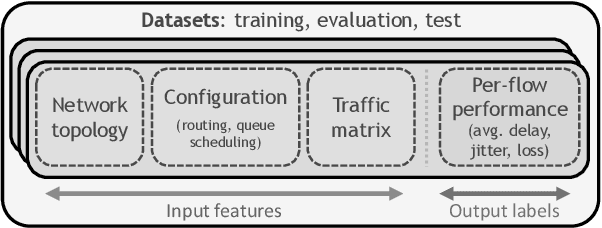
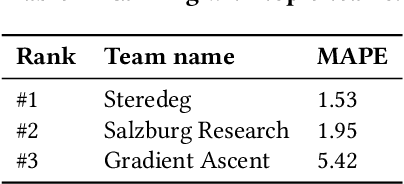
Abstract:During the last decade, Machine Learning (ML) has increasingly become a hot topic in the field of Computer Networks and is expected to be gradually adopted for a plethora of control, monitoring and management tasks in real-world deployments. This poses the need to count on new generations of students, researchers and practitioners with a solid background in ML applied to networks. During 2020, the International Telecommunication Union (ITU) has organized the "ITU AI/ML in 5G challenge'', an open global competition that has introduced to a broad audience some of the current main challenges in ML for networks. This large-scale initiative has gathered 23 different challenges proposed by network operators, equipment manufacturers and academia, and has attracted a total of 1300+ participants from 60+ countries. This paper narrates our experience organizing one of the proposed challenges: the "Graph Neural Networking Challenge 2020''. We describe the problem presented to participants, the tools and resources provided, some organization aspects and participation statistics, an outline of the top-3 awarded solutions, and a summary with some lessons learned during all this journey. As a result, this challenge leaves a curated set of educational resources openly available to anyone interested in the topic.
Deep Reinforcement Learning meets Graph Neural Networks: An optical network routing use case
Oct 16, 2019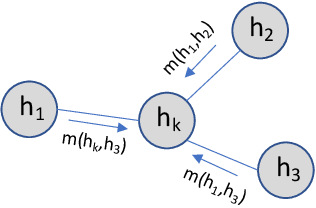
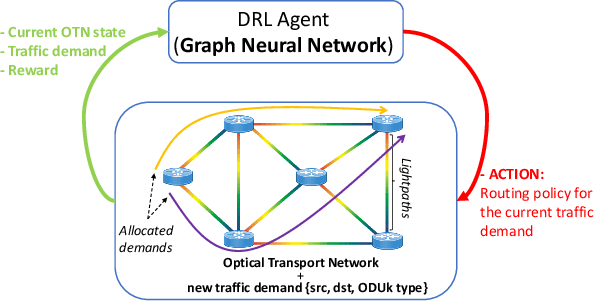
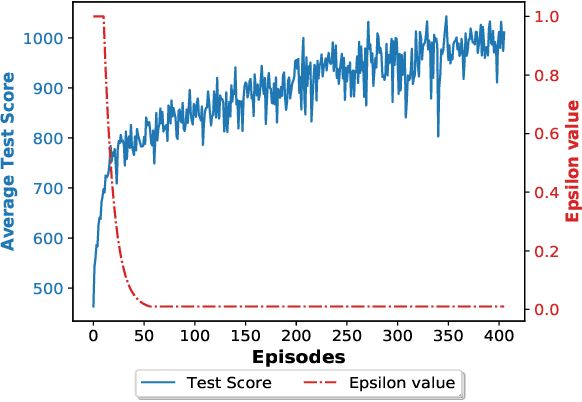
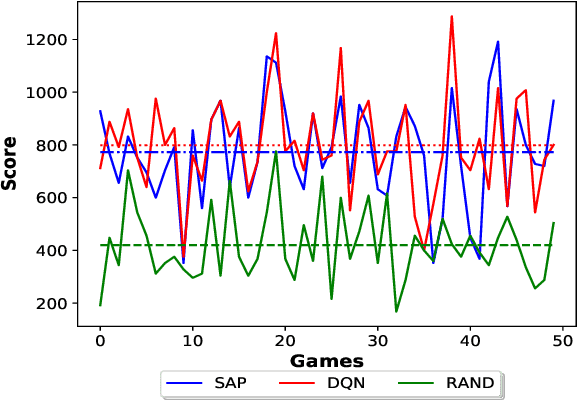
Abstract:Recent advances in Deep Reinforcement Learning (DRL) have shown a significant improvement in decision-making problems. The networking community has started to investigate how DRL can provide a new breed of solutions to relevant optimization problems, such as routing. However, most of the state-of-the-art DRL-based networking techniques fail to generalize, this means that they can only operate over network topologies seen during training, but not over new topologies. The reason behind this important limitation is that existing DRL networking solutions use standard neural networks (e.g., fully connected), which are unable to learn graph-structured information. In this paper we propose to use Graph Neural Networks (GNN) in combination with DRL. GNN have been recently proposed to model graphs, and our novel DRL+GNN architecture is able to learn, operate and generalize over arbitrary network topologies. To showcase its generalization capabilities, we evaluate it on an Optical Transport Network (OTN) scenario, where the agent needs to allocate traffic demands efficiently. Our results show that our DRL+GNN agent is able to achieve outstanding performance in topologies unseen during training.
RouteNet: Leveraging Graph Neural Networks for network modeling and optimization in SDN
Oct 03, 2019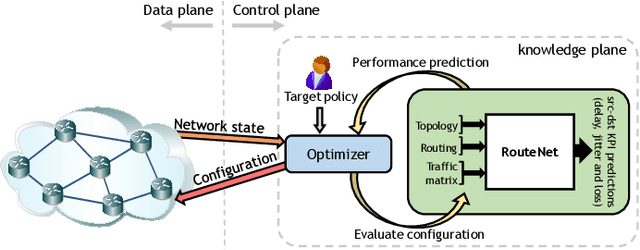
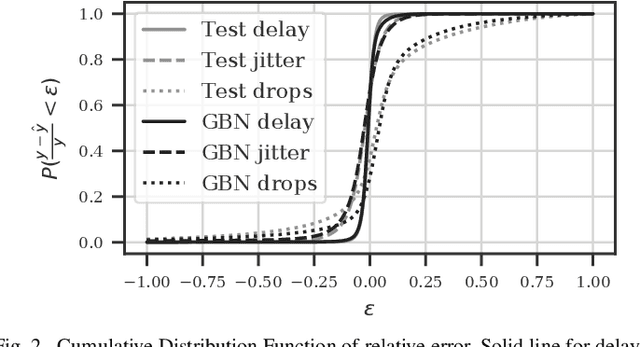


Abstract:Network modeling is a key enabler to achieve efficient network operation in future self-driving Software-Defined Networks. However, we still lack functional network models able to produce accurate predictions of Key Performance Indicators (KPI) such as delay, jitter or loss at limited cost. In this paper we propose RouteNet, a novel network model based on Graph Neural Network (GNN) that is able to understand the complex relationship between topology, routing and input traffic to produce accurate estimates of the per-source/destination per-packet delay distribution and loss. RouteNet leverages the ability of GNNs to learn and model graph-structured information and as a result, our model is able to generalize over arbitrary topologies, routing schemes and traffic intensity. In our evaluation, we show that RouteNet is able to predict accurately the delay distribution (mean delay and jitter) and loss even in topologies, routing and traffic unseen in the training (worst case $R^{2}$ = 0.878). Also, we present several use-cases where we leverage the KPI predictions of our GNN model to achieve efficient routing optimization and network planning.
 Add to Chrome
Add to Chrome Add to Firefox
Add to Firefox Add to Edge
Add to Edge